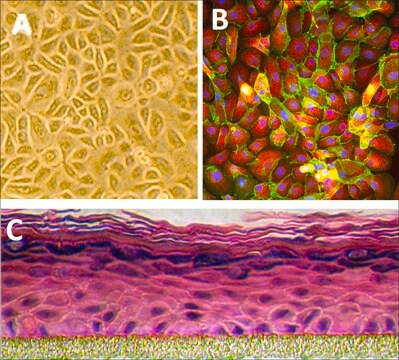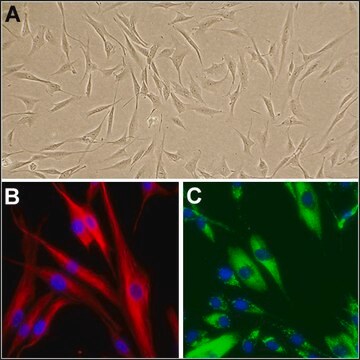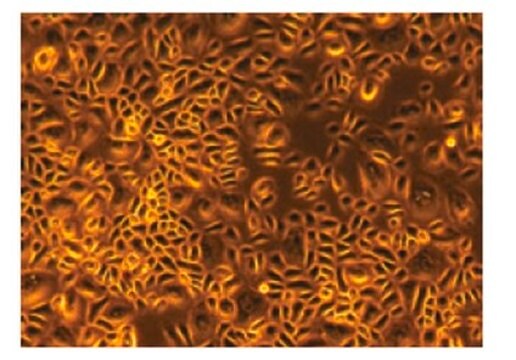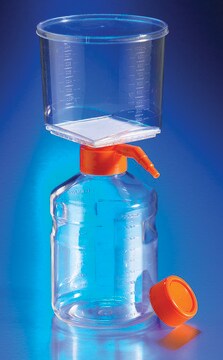102-05N
Human Epidermal Keratinocytes: HEK, neonatal
Synonim(y):
HEK cells
About This Item
Polecane produkty
pochodzenie biologiczne
human neonatal foreskin or adult skin (normal)
Poziom jakości
opakowanie
pkg of 500,000 cells
producent / nazwa handlowa
Cell Applications, Inc
tryb wzrostu
Adherent
kariotyp
2n = 46
morfologia
Epidermal
metody
cell culture | mammalian: suitable
powiązane choroby
allergies; cancer
Warunki transportu
dry ice
temp. przechowywania
−196°C
Opis ogólny
Epidermal keratinocytes comprise 90 % of all cells found in the epidermis, the outermost layer of skin. They produce keratin, the intermediate filament, largely responsible for skin’s barrier function. Through their interactions with epidermal melanocytes, keratinocytes obtain melanin and store it as a means of protection from UV radiation.
HEK provide an excellent model system to study many aspects of epithelial function and disease, particularly those related to skin biology and toxicology, as well as HPV infection.
When grown on inserts and provided with the liquid/air interface, HEK can differentiate into a stratified squamous epithelium and serve as a more physiological 3D tissue model for in vitro studies.
Pochodzenie linii komórkowej
Zastosowanie
Komponenty
Uwaga dotycząca przygotowania
- Primary culture, >500,000 cells in Basal Medium containing 10% FBS & 10% DMSO
- Can be cultured at least 16 doublings
Rutyna subkultury
Oświadczenie o zrzeczeniu się odpowiedzialności
Kod klasy składowania
11 - Combustible Solids
Klasa zagrożenia wodnego (WGK)
WGK 3
Temperatura zapłonu (°F)
Not applicable
Temperatura zapłonu (°C)
Not applicable
Certyfikaty analizy (CoA)
Poszukaj Certyfikaty analizy (CoA), wpisując numer partii/serii produktów. Numery serii i partii można znaleźć na etykiecie produktu po słowach „seria” lub „partia”.
Masz już ten produkt?
Dokumenty związane z niedawno zakupionymi produktami zostały zamieszczone w Bibliotece dokumentów.
Klienci oglądali również te produkty
Protokoły
Przechowywanie - Przygotowanie do hodowli - Hodowla HEK - Podhodowla HEK
Storage - Preparation for Culturing - Culturing HEK - Subculturing HEK
3D cell culture protocol for generating epidermal human skin tissue using primary human keratinocytes, dermal fibroblasts, and collagen-coated transwell inserts.
3D cell culture protocol for generating epidermal human skin tissue using primary human keratinocytes, dermal fibroblasts, and collagen-coated transwell inserts.
Nasz zespół naukowców ma doświadczenie we wszystkich obszarach badań, w tym w naukach przyrodniczych, materiałoznawstwie, syntezie chemicznej, chromatografii, analityce i wielu innych dziedzinach.
Skontaktuj się z zespołem ds. pomocy technicznej



![5-[bis(2-hydroxyethyl)amino]-6-methyl-2,4(1H,3H)-pyrimidinedione AldrichCPR](/deepweb/assets/sigmaaldrich/product/structures/289/225/e0030cf1-6044-4392-afb4-cfd9fcba4bbc/640/e0030cf1-6044-4392-afb4-cfd9fcba4bbc.png)


